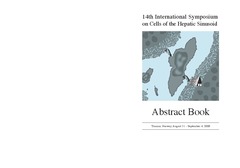Genome mapping of seed-borne allergens and immunoresponsive proteins in wheat
Permanent link
https://hdl.handle.net/10037/15164Date
2018-08-17Type
Journal articleTidsskriftartikkel
Peer reviewed
Author
Juhasz, Angela; Belova, Tatiana; Florides, Chris G; Maulis, Csaba; Fischer, Iris; Gell, Gyongyver; Birinyi, Zsofia; Ong, Jamie; Keeble-Gagnere, Gabriel; Maharajan, Amudha Deepalakshmi; Ma, Wujun; Gibson, Peter; Jia, Jizeng; Lang, Daniel; Mayer, Klaus F X; Spannagl, Manuel; Tye-Din, Jason A.; Appels, Rudi; Olsen, Odd-ArneAbstract
Wheat is an important staple grain for humankind globally because of its end-use quality and nutritional properties and its adaptability to diverse climates. For a small proportion of the population, specific wheat proteins can trigger adverse immune responses and clinical manifestations such as celiac disease, wheat allergy, baker’s asthma, and wheat-dependent exercise-induced anaphylaxis (WDEIA). Establishing the content and distribution of the immunostimulatory regions in wheat has been hampered by the complexity of the wheat genome and the lack of complete genome sequence information. We provide novel insights into the wheat grain proteins based on a comprehensive analysis and annotation of the wheat prolamin Pfam clan grain proteins and other non-prolamin allergens implicated in these disorders using the new International Wheat Genome Sequencing Consortium bread wheat reference genome sequence, RefSeq v1.0. Celiac disease and WDEIA genes are primarily expressed in the starchy endosperm and show wide variation in protein- and transcript-level expression in response to temperature stress. Nonspecific lipid transfer proteins and α-amylase trypsin inhibitor gene families, implicated in baker’s asthma, are primarily expressed in the aleurone layer and transfer cells of grains and are more sensitive to cold temperature. The study establishes a new reference map for immunostimulatory wheat proteins and provides a fresh basis for selecting wheat lines and developing diagnostics for products with more favorable consumer attributes.
Description
Source at https://doi.org/10.1126/sciadv.aar8602.
Publisher
American Association for the Advancement of ScienceCitation
Juhasz, A., Belova, T., Florides, C.G., Maulis, C., Fischer, I., Gell, G., ... Olsen O. (2018). Genome mapping of seed-borne allergens and immunoresponsive proteins in wheat. Science Advances, 4(8), eaar8602. https://doi.org/10.1126/sciadv.aar8602Metadata
Show full item recordCollections
Related items
Showing items related by title, author, creator and subject.
-
Influence of environmental tonicity changes on lipophilic drug release from liposomes
Nikolaisen, Trygg Einar (Mastergradsoppgave; Master thesis, 2018-05-15)Introduction: Liposomes as drug delivery systems has been widely studied as a way to solubilize poorly soluble drugs, reduce side effects of chemotherapeutics and increase circulation time in vivo. Since the first descriptions of liposomes over 60 years ago, they have shown tendencies to shrink and swell when the external environment of the liposomes is altered. This phenomenon has been studied in ... -
The Temporomandibular Joint in Juvenile Idiopathic Arthritis, focusing on Quality of Life, Oral Microbiome and Intervention
Frid, Paula (Doctoral thesis; Doktorgradsavhandling, 2020-10-02)The temporomandibular joint (TMJ) is commonly involved in juvenile idiopathic arthritis (JIA), and may lead to impaired mouth opening, pain and facial growth disturbances. Asymptomatic TMJ arthritis may be diagnosed late in the disease course, thus management is challenging. The overall objectives of this thesis were to provide new knowledge on quality of life (QoL), the oral microbiome and interventions ... -
14th International Symposium on Cells of the Hepatic Sinusoid
Smedsrød, Bård (Book; Bok, 2008-08-31)Abstract book of the symposium


 English
English norsk
norsk


